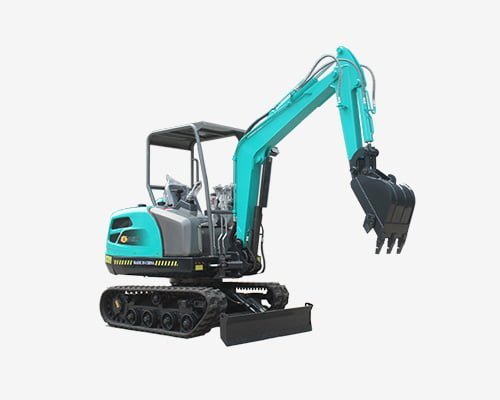Introduction
Accessing and maneuvering within confined spaces ranks among the main advantages mini excavators offer over their full-sized counterparts. But even while touting a “compact” designation, mini excavating equipment still requires careful assessment around machine widths to ensure sufficient clearance when entering job sites with restricted entry points or operating alongside congested urban infrastructure features like light poles or subgrade utilities. This article provides clarity around standard mini excavator width boundaries.
Width by Size Class

Mini excavator width profiles span a range matching their operational weight ratings, bucket sizes and chassis frameworks needed to provide necessary digging forces, as summarized in Table 1:
Table 1. Mini Excavator Widths
| Type | Average Width |
|---|---|
| Micro (1-3 ton) | 3 – 4 ft |
| Mini (4-6 ton) | 5 – 6 ft |
| Midi (7-10 ton) | 7 – 8 ft |
The smallest micro excavators narrow to about 3 feet but midi-class rigs approaching 9 tons reach widths exceeding 8 feet – dimensions rivalling full parking spaces. Yet width strictly focuses on the main body without addressing functional operating spans.
Operational Swing Span
During excavation activities, the rotating superstructure where the boom and cab sit extends beyond the chassis itself, with tail swing further amplifying total sweep radius. Common working spans range:
- Micro: 6-8 ft
- Mini: 8-12 ft
- Midi: 13-16 ft
This tripled swing width matters when estimating work space provisions. Note whether quoted dimensions reference chassis width or full outer operational dimensions during equipment selection.
Track vs Wheel Width Differences
The undercarriage drive system also affects overall machine width. Steel tracks widen base dimensions significantly to distribute heavy equipment loads over broader ground contact areas for enhanced weight flotation across poor soils without sinking or need for temporary roadway pads. Table 2 compares drive systems:
Table 2. Mini Excavator Track vs Wheel Widths
| Model | Wheel Width | Track Width |
|---|---|---|
| 1 Ton Excavator | 2.5 ft | 4 ft |
| 6 Ton Excavator | 4.5 ft | 6 ft |
Narrower wheeled models offer tighter access assuming ground stability but tracked units provide ultimate terrain flexibility.
Transport Considerations

Hauling mini excavators between sites introduces additional width considerations involving local road regulations and equipment trailer limitations to contain outer dimensions. Common rules of thumb include:
- Exceeding 8 foot widths mandates specialized hauling permits on public roads
- Most enclosed trailers offer between 7-8 feet transportable width
- Trailer side wall cutouts accommodate mini-excavator track widths barely contained down roadways
Foldable excavator arms and removable counterweights condense hauling profiles. Overwidth waiver requests prove unavoidable moving larger mid-class tracked excavators near 8 foot total drive widths.
Through-the-Wall Accessibility
Gaining building entry further narrows allowable clearance thresholds. While micro sizes slim down adequately for commercial door frames at 3 foot widths, larger mini excavators struggle passing standard residential or commercial openings. Strategies like wall section removals work around limited hall entry constraints during renovations but reduce tactical maneuverability.
FAQs
Can excavators squeeze through narrower gaps?
Blade and track widths establish rigid machinery boundaries. Trying to force openings risks structural damage and alignment issues preventing functionality. Mini-excavators only compress so far before jeopardizing machine integrity.
What requires excavator escort vehicles?
In addition to enveloping widths, exceeding road height limits above 13’6” also necessitates lead/trail escort vehicles plus special red flags and signs warning other drivers around oversized loads for safe visibility.
Which excavators work inside buildings?
Only micro excavators slim enough to fit standard doors yet retain enough power prove viable for sustained indoor operations like basements, airports or warehouses. Larger equipment operates best restricted outdoors.
Conclusion:How Wide Are Mini Excavators
Despite touting a “mini” designation, even compact excavators’ operational widths still occupy substantial footprints that restrict navigating narrow access routes, passing through limited openings or maneuvering alongside infrastructure obstacles. Carefully confirming chassis dimensions and swing radii against hauling, site and storage space provisions prevents unforeseen transportation barriers or functionality limitations that undermine leveraging equipment investments to their highest productivity potential across otherwise accommodating project sites.

